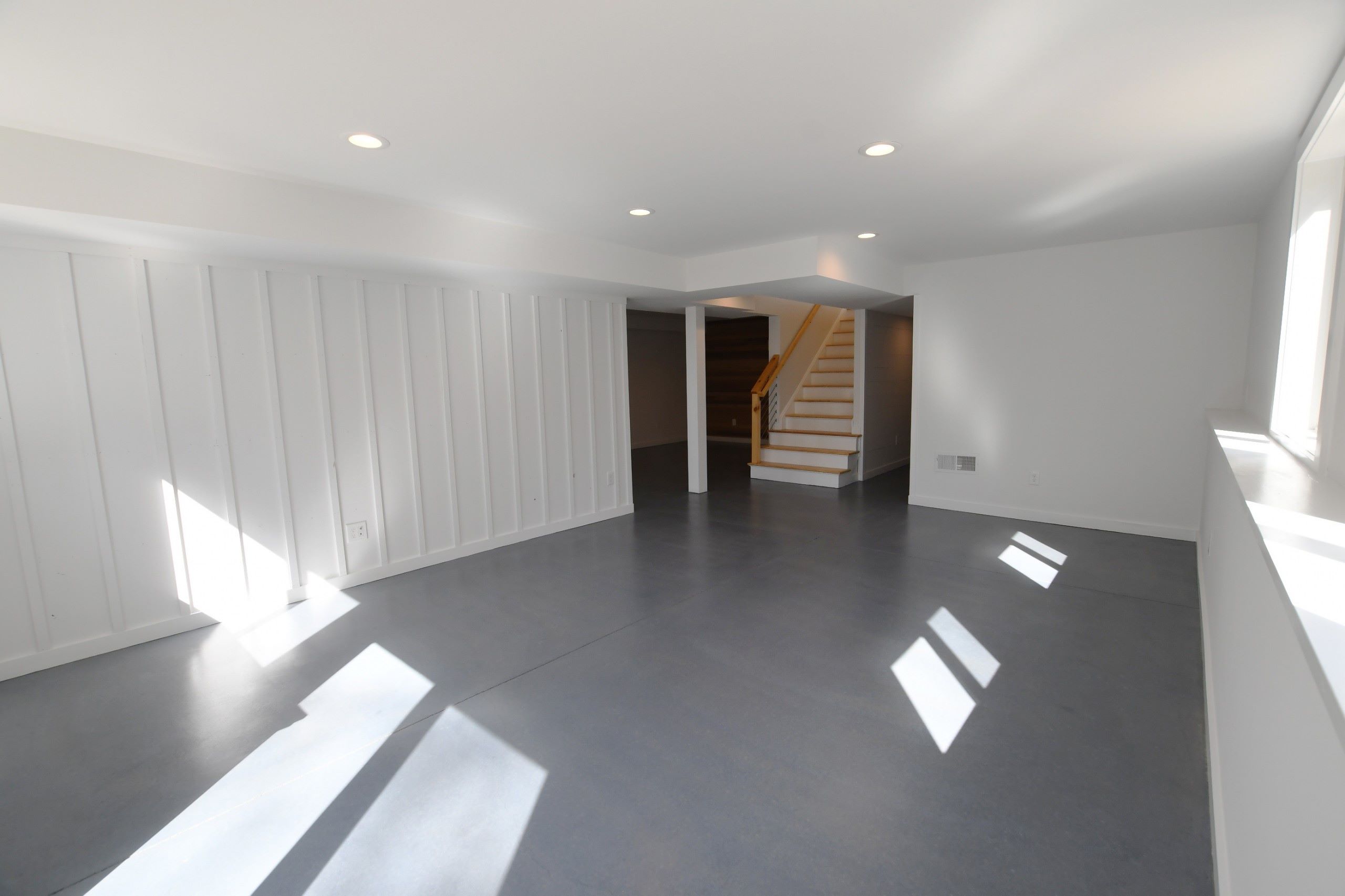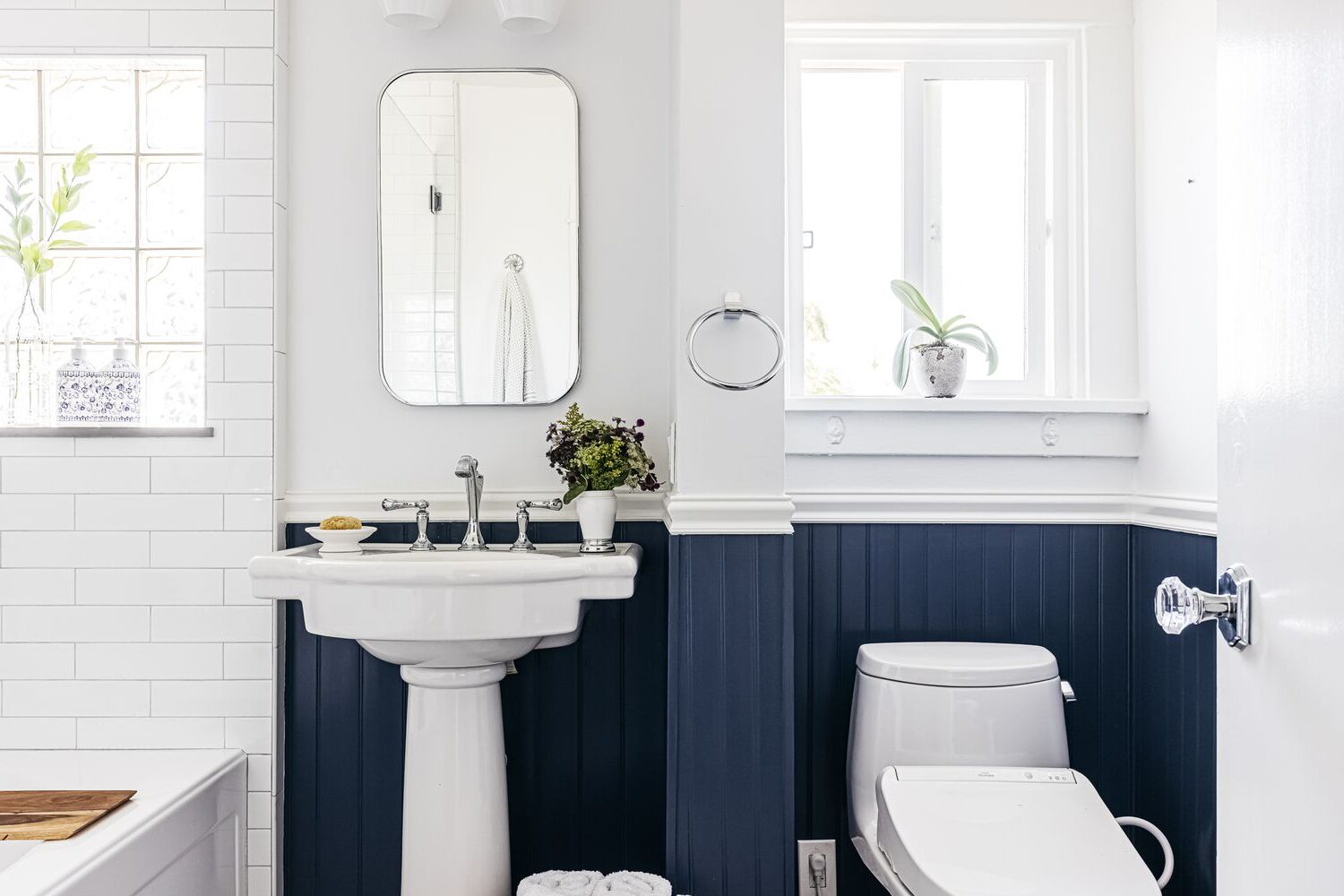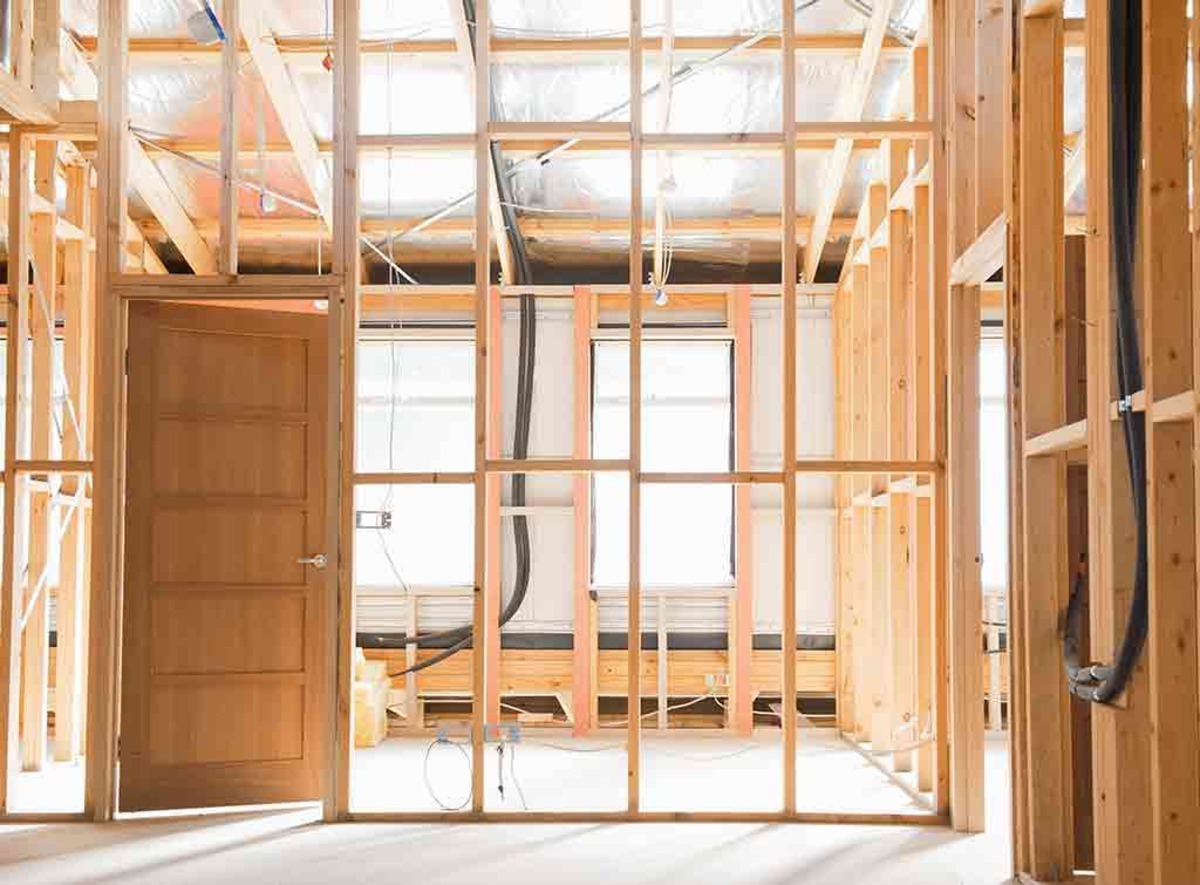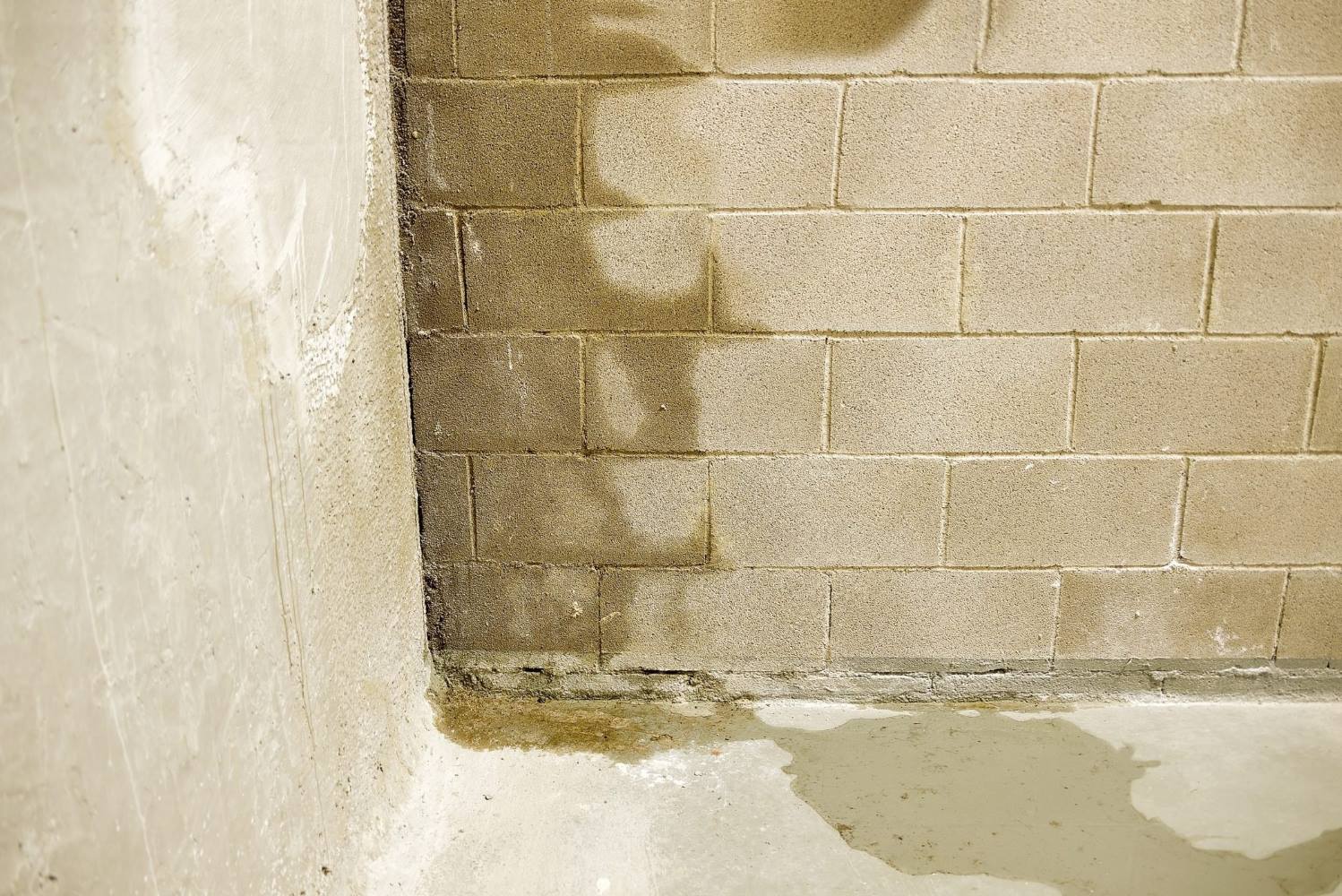Home>Outdoors & Camping>Hardscaping>How To Build A Retaining Wall
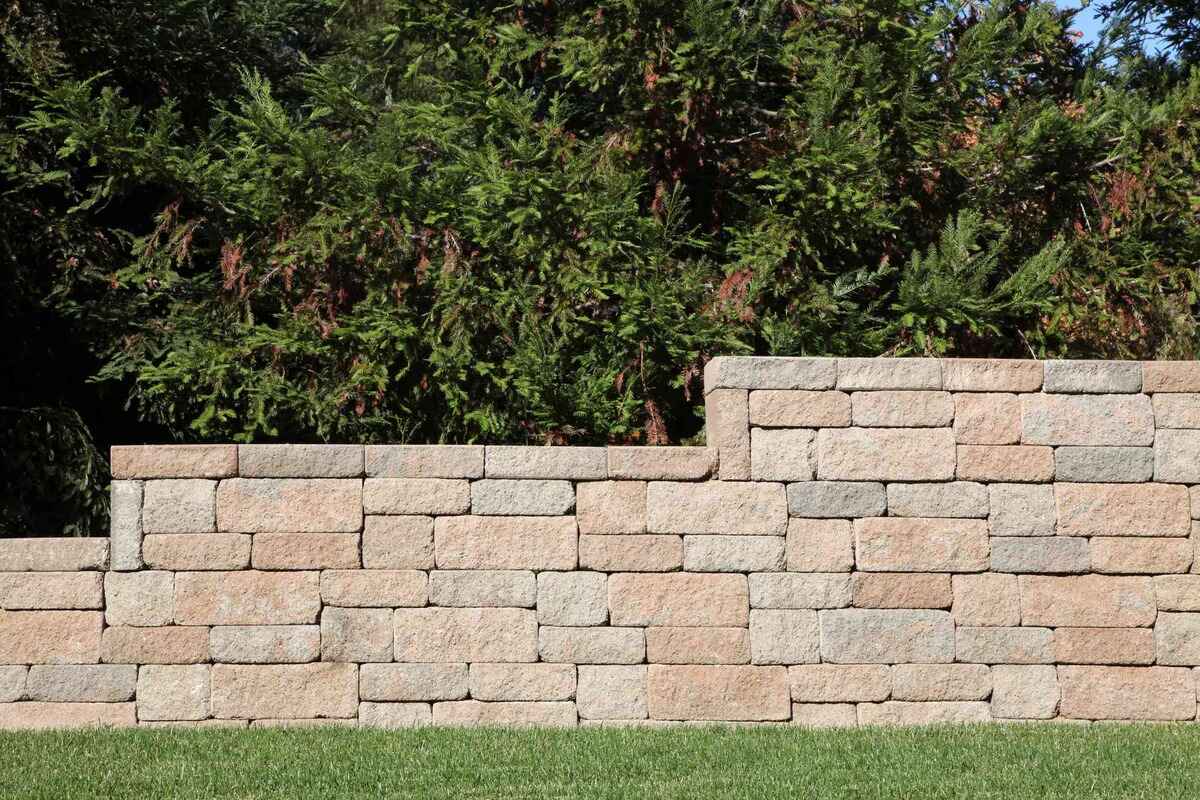

Hardscaping
How To Build A Retaining Wall
Published: February 20, 2024

Content Creator for Outdoors & Camping, Sophie turns any yard into a sustainable paradise. Her dedication to DIY outdoor projects and volunteer work in community gardens shares joy and knowledge.
Learn how to build a sturdy retaining wall with our comprehensive hardscaping guide. Get expert tips and step-by-step instructions for a successful project.
(Many of the links in this article redirect to a specific reviewed product. Your purchase of these products through affiliate links helps to generate commission for Twigandthistle.com, at no extra cost. Learn more)
Introduction
Retaining walls are not just functional; they can also add a touch of elegance and structure to any outdoor space. Whether you're looking to level out a sloped landscape, create a terraced garden, or define specific areas in your yard, a well-constructed retaining wall can be the key to achieving your desired aesthetic and practical goals.
When it comes to hardscaping, retaining walls stand out as a fundamental element that serves both utilitarian and decorative purposes. These structures are designed to hold back soil and create level surfaces in areas with varying elevations. They can transform a challenging landscape into a visually appealing and functional space, providing support for everything from flower beds to seating areas.
The beauty of retaining walls lies in their versatility. They can be built using a wide range of materials, including natural stone, concrete blocks, bricks, and timber, allowing homeowners to choose an option that complements their existing outdoor design. Additionally, retaining walls can be customized to suit different styles, whether you prefer a modern, sleek look or a more rustic, natural appearance.
In this comprehensive guide, we will explore the essential steps and considerations involved in building a retaining wall. From planning and design to the selection of materials and the actual construction process, we will cover everything you need to know to embark on this rewarding hardscaping project. By the end of this guide, you will have the knowledge and confidence to create a stunning and durable retaining wall that enhances the functionality and beauty of your outdoor space.
Read more: How To Build A Retaining Wall On A Slope
Planning and Design
Before embarking on the construction of a retaining wall, thorough planning and thoughtful design are crucial to ensure the success and longevity of the structure. This initial phase sets the foundation for the entire project and involves several key considerations.
Assessing the Site
The first step in planning a retaining wall is to assess the site where the wall will be constructed. Take note of the slope of the land, the type of soil present, and any existing drainage patterns. Understanding these factors will help determine the appropriate height and placement of the wall, as well as the necessary drainage provisions.
Determining Wall Height and Length
Based on the site assessment, determine the ideal height and length of the retaining wall. Consider the purpose of the wall, whether it's for creating terraced levels, preventing soil erosion, or adding visual interest to the landscape. The height of the wall will influence the materials and construction methods required, so it's essential to make this decision early in the planning phase.
Selecting Materials and Style
Choose the materials and style that best complement the overall design of your outdoor space. Whether you opt for natural stone, concrete blocks, bricks, or timber, ensure that the selected materials align with the aesthetic of your landscape. Additionally, consider the color, texture, and shape of the materials to achieve a cohesive and visually appealing result.
Read more: How To Build A Boulder Retaining Wall
Considering Drainage
Proper drainage is critical for the longevity of a retaining wall. Incorporate drainage solutions into the design, such as gravel backfill, perforated pipe systems, or weep holes, to prevent water buildup behind the wall. Effective drainage will alleviate hydrostatic pressure, reducing the risk of structural damage over time.
Obtaining Permits and Regulations
Check local building codes and regulations to determine if permits are required for building a retaining wall. Understanding these legal requirements is essential to avoid potential issues during or after construction. Additionally, consulting with a professional engineer or contractor may be necessary, especially for taller or more complex retaining wall projects.
By carefully considering these aspects during the planning and design phase, you can lay the groundwork for a successful and visually appealing retaining wall. Thoughtful planning not only ensures the structural integrity of the wall but also allows for the seamless integration of the wall into the existing landscape, enhancing the overall outdoor environment.
Choosing the Right Materials
Selecting the appropriate materials for your retaining wall is a pivotal decision that significantly influences both the structural integrity and visual appeal of the final product. The choice of materials should align with the overall design aesthetic of your outdoor space while also meeting the functional requirements of the retaining wall.
Natural Stone
Natural stone offers a timeless and organic look, making it a popular choice for retaining walls. The inherent variations in color, texture, and shape of natural stone create a visually striking and unique appearance. Options such as limestone, sandstone, and granite provide durability and weather resistance, ensuring the longevity of the retaining wall. Additionally, the irregularity of natural stone allows for creative freedom in designing a wall with a distinct, rustic charm.
Read more: How To Build A Wood Retaining Wall
Concrete Blocks
Concrete blocks are renowned for their versatility and durability, making them an excellent choice for retaining walls. Available in a wide range of sizes, shapes, and colors, concrete blocks offer flexibility in design and can be easily stacked and secured to create a sturdy and long-lasting wall. Moreover, interlocking concrete blocks provide a seamless and uniform appearance, ideal for modern or contemporary outdoor settings.
Bricks
Brick retaining walls exude a classic and timeless appeal, adding a touch of warmth and character to outdoor spaces. The uniformity and precision of bricks allow for the creation of clean lines and structured designs, making them suitable for both traditional and contemporary landscapes. With proper installation and maintenance, brick retaining walls can withstand the test of time while imparting a sense of enduring elegance to the surroundings.
Timber
For a more natural and rustic aesthetic, timber retaining walls offer a warm and inviting charm. Treated hardwood or pressure-treated softwood can be used to construct retaining walls that blend seamlessly with natural surroundings. Timber walls are particularly well-suited for creating a cozy and intimate atmosphere in garden settings, providing a gentle transition between the built environment and the surrounding greenery.
Considerations
When choosing materials for your retaining wall, it's essential to consider factors such as the wall's height, the local climate, and the maintenance requirements of the selected materials. Additionally, ensure that the chosen materials align with your budget and long-term vision for your outdoor space.
By carefully evaluating these material options and their respective characteristics, you can make an informed decision that results in a visually stunning, durable, and functional retaining wall that enhances the overall appeal of your outdoor environment.
Preparing the Site
Preparing the site for the construction of a retaining wall is a crucial step that sets the stage for a successful and enduring structure. This phase involves several essential tasks aimed at ensuring the stability, longevity, and functionality of the wall.
Clearing and Excavation
The first step in preparing the site is to clear the area where the retaining wall will be built. Remove any vegetation, debris, or obstacles that may impede the construction process. Excavate the area to create a level and firm foundation for the wall. The depth of the excavation will depend on the planned height of the wall and the type of soil present. It's important to excavate beyond the frost line to prevent potential frost heave, which can compromise the stability of the wall.
Compaction and Grading
Once the area is cleared and excavated, the soil must be properly compacted to create a stable base for the retaining wall. Use a plate compactor to achieve adequate compaction, ensuring that the soil is uniformly dense and capable of supporting the weight of the wall. Additionally, proper grading of the site is essential to facilitate drainage and prevent water accumulation behind the wall. The graded surface should slope away from the wall to direct water flow and minimize hydrostatic pressure.
Installation of Drainage
Incorporating effective drainage behind the retaining wall is critical for preventing water buildup and potential damage to the structure. Install a perforated drainage pipe at the base of the wall, surrounded by a layer of gravel to facilitate proper water drainage. This drainage system will help alleviate hydrostatic pressure and minimize the risk of soil erosion or structural instability over time.
Read more: How To Build A Wall
Backfilling and Compaction
After the drainage system is in place, backfill the area behind the retaining wall with gravel or crushed stone. The backfill material should promote proper drainage and provide structural support for the wall. Compact the backfill in layers to ensure uniform density and stability. Proper compaction is essential to prevent settling and shifting of the backfilled soil, which could compromise the integrity of the retaining wall.
Site Inspection and Final Preparation
Before proceeding with the construction of the retaining wall, conduct a thorough inspection of the prepared site to ensure that all necessary steps have been completed to the required standards. Verify the compaction of the soil, the installation of drainage components, and the overall readiness of the site for the construction phase. Any necessary adjustments or additional preparations should be addressed at this stage to ensure a solid foundation for the retaining wall.
By meticulously preparing the site in accordance with these guidelines, you can establish a stable and well-drained foundation for the retaining wall, laying the groundwork for a structurally sound and visually appealing hardscape feature.
Building the Base
The base of a retaining wall serves as the cornerstone of its structural integrity, providing stability and support to the entire structure. Building a solid and well-engineered base is essential to ensure the longevity and functionality of the retaining wall. This phase of construction involves several critical steps aimed at creating a robust foundation that can withstand the pressures exerted by the retained soil.
Excavation and Subbase Preparation
The first step in building the base of a retaining wall is to excavate the trench where the first course of the wall will be laid. The depth and width of the trench will depend on the design and engineering specifications of the wall, as well as the type of soil and the planned height of the structure. Once the trench is excavated, it must be carefully leveled and compacted to create a uniform and stable subbase.
Read more: How to Build DIY Bathroom Wall Panels
Adding the Subbase Material
After the trench is prepared, the next crucial step is to add the subbase material, typically composed of crushed stone or gravel. This layer serves as a foundational support for the first course of the retaining wall. The subbase material should be spread evenly and compacted thoroughly to ensure proper load distribution and stability. Adequate compaction of the subbase is essential to prevent settling and shifting of the wall over time.
Leveling and Alignment
Once the subbase material is in place, it's important to ensure that it is leveled and aligned accurately. Proper leveling is crucial for establishing a consistent and even base for the first course of the retaining wall. Additionally, precise alignment is essential to ensure that the subsequent courses of the wall are constructed with uniformity and structural integrity.
Compaction and Verification
After the subbase material is leveled and aligned, it must be compacted thoroughly using a plate compactor or a similar tool. Proper compaction is vital to achieve the required density and load-bearing capacity of the subbase. Once compacted, the base should be verified for uniformity and stability, ensuring that it meets the engineering standards and specifications for the retaining wall.
By meticulously following these steps to build a solid and well-engineered base, you can establish a strong foundation for the retaining wall, setting the stage for the successful construction of a durable and visually appealing hardscape feature.
Laying the First Course
The process of laying the first course of a retaining wall is a critical phase that sets the tone for the entire construction. This initial course serves as the foundation upon which the subsequent layers will be built, making it essential to execute this step with precision and attention to detail.
Read more: How to Build DIY Wall Panels
Setting the First Stones or Blocks
The first course of a retaining wall typically involves placing the initial layer of stones, bricks, or blocks in the prepared trench or on the compacted subbase. Careful consideration should be given to the orientation and alignment of these foundational elements, as they will dictate the overall stability and appearance of the wall. Whether using natural stone, concrete blocks, or bricks, ensuring that the first course is level, straight, and securely positioned is paramount.
Utilizing Leveling and Alignment Tools
To achieve the desired level and alignment of the first course, the use of leveling and alignment tools is indispensable. A builder's level, a string line, and a mason's square are commonly employed to ensure that the stones or blocks are positioned accurately and uniformly. These tools aid in verifying both the horizontal and vertical alignment of the first course, laying the groundwork for a structurally sound and visually appealing retaining wall.
Incorporating Proper Backfilling and Compaction
As the first course is laid, it is essential to backfill the space behind the stones or blocks with a suitable material, such as gravel or crushed stone. This backfilling process serves to provide additional support and stability to the initial layer while facilitating proper drainage behind the wall. Subsequent compaction of the backfilled material is crucial to prevent settling and ensure the integrity of the first course.
Verifying Structural Integrity
Once the first course is in place, a thorough inspection should be conducted to verify its structural integrity. This involves checking for uniformity in height, alignment, and levelness, as well as ensuring that the stones or blocks are securely positioned. Any necessary adjustments or corrections should be made at this stage to guarantee the stability and reliability of the initial course.
By meticulously executing the process of laying the first course, you establish a solid foundation for the retaining wall, laying the groundwork for the successful construction of a durable and visually appealing hardscape feature.
Read more: How To Build Exterior Wall
Adding Drainage
Proper drainage is a critical component of a well-constructed retaining wall, playing a pivotal role in preventing water buildup and mitigating the potential for structural damage over time. Effective drainage solutions are essential for managing hydrostatic pressure and minimizing the risk of soil erosion behind the wall. The incorporation of drainage elements during the construction process is a fundamental step in ensuring the longevity and stability of the retaining wall.
Perforated Drainage Pipe
One of the primary methods for adding drainage behind a retaining wall is the installation of a perforated drainage pipe. This pipe is typically placed at the base of the wall, parallel to the backfilled area, to facilitate the efficient removal of excess water. The perforations in the pipe allow water to enter, redirecting it away from the wall and preventing the buildup of hydrostatic pressure. Proper positioning and alignment of the drainage pipe are crucial to ensure optimal functionality and performance.
Gravel Backfill
In conjunction with the perforated drainage pipe, the backfill material used behind the retaining wall plays a significant role in promoting effective drainage. Gravel or crushed stone is commonly employed as backfill due to its permeable nature, allowing water to percolate through and away from the wall. The use of well-graded, free-draining backfill material is essential to prevent water from accumulating behind the wall, reducing the potential for soil saturation and associated structural issues.
Weep Holes
In some retaining wall designs, weep holes are incorporated to facilitate drainage and alleviate water pressure. Weep holes are small openings or voids strategically placed within the wall structure to allow water to escape. These openings serve as pressure relief points, preventing the buildup of water behind the wall and reducing the risk of soil saturation. Proper spacing and sizing of weep holes are essential to ensure effective drainage without compromising the structural integrity of the wall.
Read more: How To Build A Stud Wall
Backfill Compaction
After the drainage elements are in place, proper compaction of the backfill material is crucial to maintain its permeability and stability. Compacting the backfill ensures that it retains its drainage properties while providing adequate support for the retaining wall. Careful attention should be given to the compaction process to prevent settling and maintain the desired drainage characteristics of the backfilled area.
By incorporating these drainage measures, the retaining wall is equipped to effectively manage water flow and pressure, promoting its long-term durability and performance. Thoughtful consideration of drainage solutions during the construction phase is essential to mitigate potential issues and ensure the structural integrity of the retaining wall.
Building Additional Courses
As the initial course of the retaining wall is set and the foundational base is established, the process of building additional courses commences, further solidifying the structure and enhancing its visual impact. Each subsequent course contributes to the overall strength and stability of the retaining wall, creating a cohesive and resilient barrier against soil pressure and erosion.
The key to successfully building additional courses lies in meticulous attention to detail and adherence to proper construction techniques. Each stone, block, or brick must be carefully positioned and secured to ensure structural integrity and uniformity throughout the wall. The following steps are essential in the construction of additional courses:
-
Alignment and Leveling: Prior to laying each subsequent course, it is imperative to verify the alignment and levelness of the preceding course. Utilizing leveling tools and string lines, the horizontal and vertical alignment of the wall is meticulously checked to maintain consistency and structural soundness.
-
Interlocking and Staggering: When placing stones, blocks, or bricks for the additional courses, interlocking and staggering the units is crucial. This technique enhances the stability of the wall by distributing pressure more effectively and creating a visually appealing, textured surface.
-
Adhesive or Mortar Application: Depending on the chosen materials, applying adhesive or mortar between the units may be necessary to secure the additional courses. Proper application of adhesive or mortar ensures a strong bond between the units, enhancing the overall stability and longevity of the retaining wall.
-
Backfilling and Compaction: As each course is laid, the space behind the wall is backfilled with suitable material, such as gravel or crushed stone, to provide additional support and facilitate drainage. Proper compaction of the backfill material is essential to prevent settling and maintain the structural integrity of the wall.
-
Verification of Alignment and Levelness: After each course is constructed, a thorough inspection is conducted to verify the alignment, levelness, and overall stability of the wall. Any necessary adjustments or corrections are made to ensure that the wall maintains uniformity and structural soundness.
By meticulously following these steps and techniques, each additional course contributes to the overall strength, stability, and aesthetic appeal of the retaining wall. The careful execution of these construction processes ensures that the wall is well-equipped to withstand the pressures exerted by the retained soil and to enhance the visual impact of the outdoor space.
Finishing Touches
Once the structural components of the retaining wall are in place, attention turns to the finishing touches that enhance both the functionality and visual appeal of the structure. These final details not only contribute to the overall aesthetics of the wall but also play a significant role in ensuring its long-term durability and performance.
Capstones and Coping
The addition of capstones or coping to the top of the retaining wall serves both a practical and decorative purpose. Capstones provide a protective barrier against the elements, preventing moisture from seeping into the top course of the wall and potentially causing damage over time. Additionally, coping enhances the visual appeal of the wall, creating a polished and refined appearance. Whether using natural stone, concrete, or brick, the selection of capstones or coping should complement the overall design of the wall while providing a functional and aesthetically pleasing finishing touch.
Read more: How To Build A Fieldstone Wall With Mortar
Sealing and Waterproofing
To further protect the retaining wall from the effects of weather and moisture, applying a suitable sealant or waterproofing agent is recommended. This additional layer of protection helps to prevent water penetration, minimizing the risk of efflorescence, staining, and deterioration of the wall materials. Proper sealing and waterproofing contribute to the longevity of the retaining wall, preserving its structural integrity and appearance over time.
Landscaping Integration
Integrating landscaping elements around the retaining wall can significantly enhance its visual impact and seamlessly blend it into the surrounding environment. Planting shrubs, flowers, or ground cover along the base of the wall softens its appearance and creates a harmonious transition between the hardscape and the natural landscape. Thoughtful landscaping around the retaining wall adds depth, texture, and color to the outdoor space, elevating its overall aesthetic appeal.
Lighting and Accents
Incorporating lighting fixtures and decorative accents can transform a retaining wall into a captivating focal point, especially during the evening hours. Strategically placed outdoor lighting not only enhances the safety and usability of the space but also highlights the textures and architectural features of the wall. Additionally, decorative elements such as ornamental sculptures, trellises, or artistic mosaics can infuse personality and charm into the retaining wall, elevating its visual allure and creating a unique outdoor ambiance.
Maintenance Considerations
Finally, addressing maintenance considerations is essential to ensure the ongoing beauty and functionality of the retaining wall. Establishing a regular maintenance routine, which may include cleaning, inspection, and minor repairs, helps to preserve the integrity and appearance of the wall. Additionally, understanding the specific maintenance requirements of the chosen materials and incorporating them into a long-term care plan is crucial for the sustained performance and aesthetics of the retaining wall.
By attending to these finishing touches, the retaining wall is not only transformed into a structurally sound and functional element but also evolves into a captivating and enduring feature within the outdoor landscape. The thoughtful integration of these final details elevates the overall impact of the retaining wall, creating a space that is both visually stunning and built to last.
Read more: DIY: How To Build A Garden Wall
Conclusion
In conclusion, the construction of a retaining wall is a multifaceted endeavor that blends practical functionality with aesthetic appeal, transforming outdoor spaces and addressing the challenges posed by sloped landscapes. From the initial planning and design phase to the meticulous construction of each course and the integration of finishing touches, the process of building a retaining wall requires careful consideration, attention to detail, and a deep understanding of hardscaping principles.
Throughout this comprehensive guide, we have delved into the essential steps and considerations involved in creating a durable and visually striking retaining wall. The importance of thorough site assessment, thoughtful material selection, and meticulous preparation cannot be overstated. These foundational aspects lay the groundwork for a successful construction project, ensuring that the retaining wall is well-equipped to withstand the test of time and enhance the overall outdoor environment.
The significance of proper drainage solutions, precise alignment and leveling, and the incorporation of finishing details has been underscored as essential elements in the construction process. These factors not only contribute to the structural integrity and longevity of the retaining wall but also elevate its visual impact, creating a harmonious and inviting outdoor space.
As homeowners and outdoor enthusiasts embark on the journey of building a retaining wall, it is crucial to approach the project with a blend of creativity, practicality, and a commitment to quality craftsmanship. Whether the goal is to create terraced gardens, define outdoor living areas, or address erosion concerns, a well-constructed retaining wall can serve as a defining feature that enhances the beauty and functionality of the landscape.
By embracing the principles outlined in this guide and infusing the construction process with passion and attention to detail, individuals can embark on a rewarding hardscaping venture that yields a stunning and enduring retaining wall. From the initial vision to the final touches, the construction of a retaining wall is a testament to the transformative power of thoughtful design and skilled craftsmanship, resulting in an outdoor space that is both structurally resilient and visually captivating.

